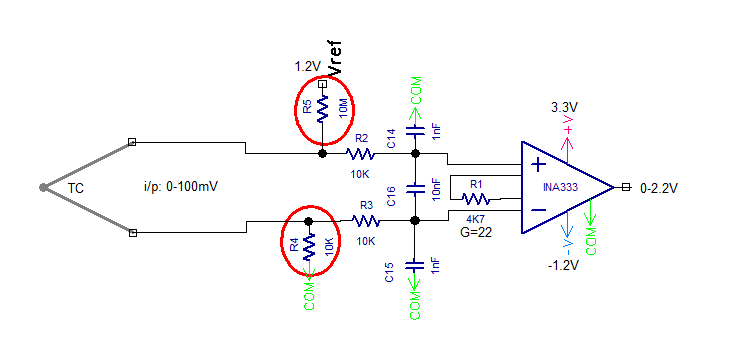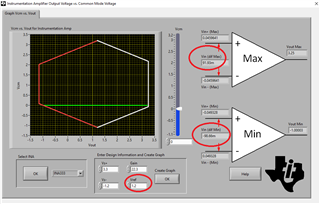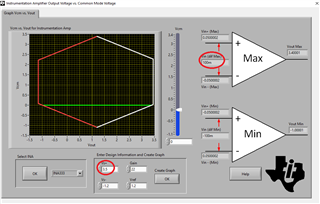Other Parts Discussed in Thread: TIPD195
The schematic at www.ti.com/.../TIPD195 for measuring other analog signals (4-20ma, 10v) shows the non-inverting terminal of the INA connected to ground directly.
I am trying to use ina333 for measuring thermocouple in a similar way. When I connect inverting terminal directly to ground instead through a resistor (10K), things are still working fine since the bias current can travel to ground with no problem as shown in TIPD195 schematic.
Please help me answer a few question that come to mind:
1. Is it ok to do this (i.e. shorting R4 to ground) for mV signals such as T/C. Does this affect the noise performance of INA333 because one terminal is connected to ground and common mode signal on the non-inverting terminal becomes a differential signal ?
2. T/C open detection is being done as shown in the circuit by connecting a high value pull up resistor (R5). It does create an error that can be corrected while calibration but the resistor does become a source for noise. Is there any other way to detect open connection for INA333 ?
I am new to instrumentation amplifier (INA333) and appreciate your response to these questions. Thank you.




